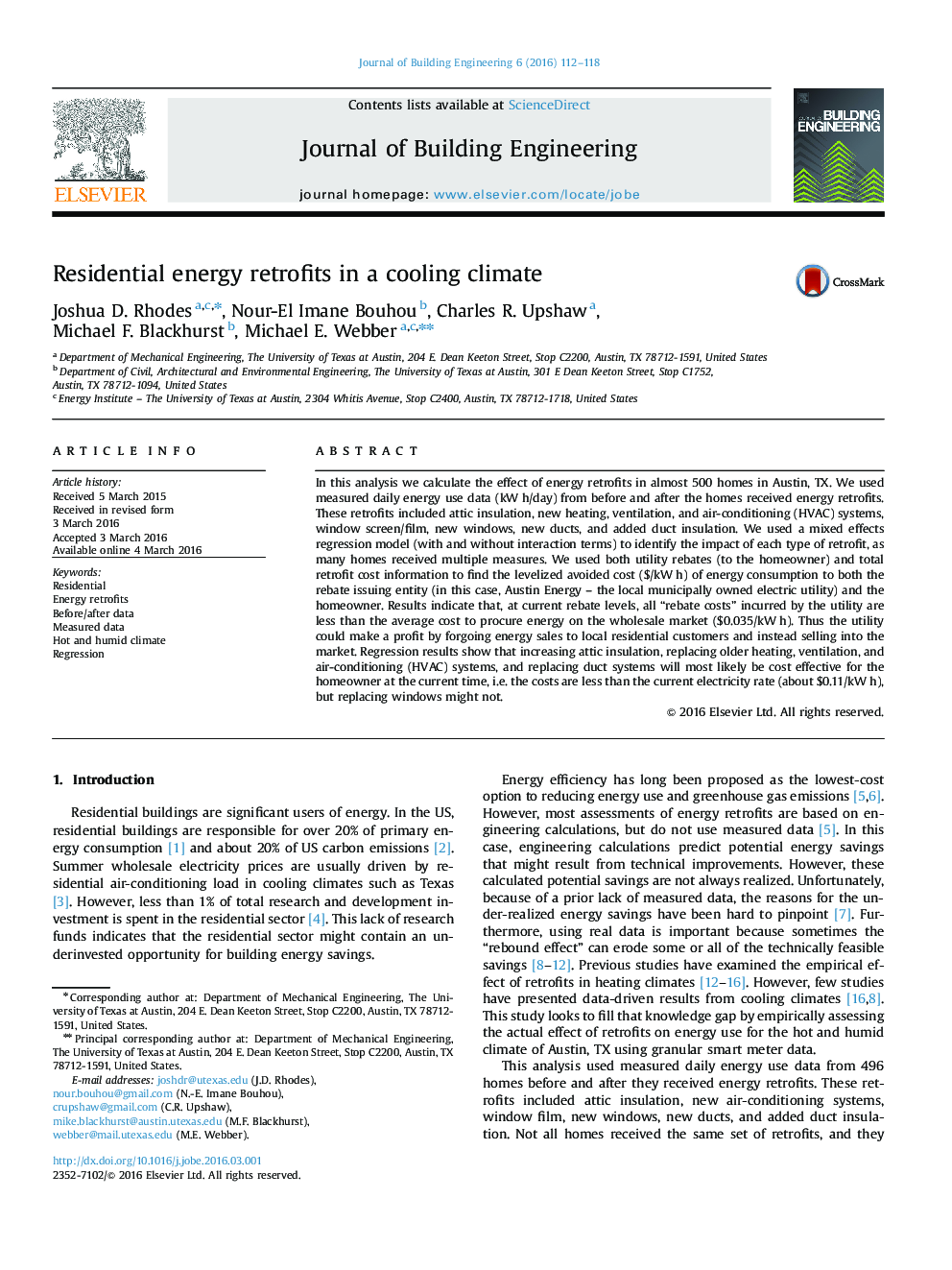| Article ID | Journal | Published Year | Pages | File Type |
|---|---|---|---|---|
| 283800 | Journal of Building Engineering | 2016 | 7 Pages |
•We calculated the effect of retrofits on actual energy use.•We used before/after data from almost 500 homes in Texas.•We calculated the price ($/kW h) for homeowner's retrofit cost.•We calculated the price ($/kW h) for the rebate-issuing entity.•Some retrofits are cost effective now, some are not.
In this analysis we calculate the effect of energy retrofits in almost 500 homes in Austin, TX. We used measured daily energy use data (kW h/day) from before and after the homes received energy retrofits. These retrofits included attic insulation, new heating, ventilation, and air-conditioning (HVAC) systems, window screen/film, new windows, new ducts, and added duct insulation. We used a mixed effects regression model (with and without interaction terms) to identify the impact of each type of retrofit, as many homes received multiple measures. We used both utility rebates (to the homeowner) and total retrofit cost information to find the levelized avoided cost ($/kW h) of energy consumption to both the rebate issuing entity (in this case, Austin Energy – the local municipally owned electric utility) and the homeowner. Results indicate that, at current rebate levels, all “rebate costs” incurred by the utility are less than the average cost to procure energy on the wholesale market ($0.035/kW h). Thus the utility could make a profit by forgoing energy sales to local residential customers and instead selling into the market. Regression results show that increasing attic insulation, replacing older heating, ventilation, and air-conditioning (HVAC) systems, and replacing duct systems will most likely be cost effective for the homeowner at the current time, i.e. the costs are less than the current electricity rate (about $0.11/kW h), but replacing windows might not.
